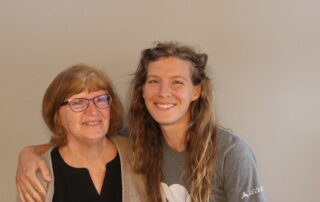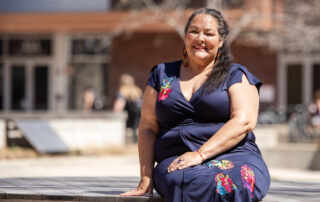Wisconsin winters are known for being cold and harsh. But John Gurda reminds us of the 19th century settlers who toughed it out on the edge of the world.
Wisconsin winters can seem interminable. Even if we were born here, even if the season is relatively mild, by January we begin to forget that the air was ever warm, that the world outside our windows was ever green.
The fact is that we’ve got it easy. Imagine, if you can, what winter was like for Milwaukee’s pioneers. Lake Michigan was their lifeline to the outside world. When ice brought shipping to a halt every November, Milwaukee was beyond the reach of civilization until the following April. News was scarce, mail service was painfully slow, and the settlers — roughly 1,000 by 1837 — had only each other to stare at for the next four or five months.
The long freeze required as much preparation as a polar expedition. In 1836 Albert Fowler listed the provisions he had put aside before the last ship left in November: “four barrels of flour, 100 pounds of butter, a barrel of crackers, a barrel of beef, and a large supply of potatoes, carrots and other vegetables.”
A monotonous diet wasn’t the only hazard of a frontier winter. Most of the Yankees were young men on the make, and months of enforced idleness must have been maddening. There were precious few distractions: no smartphones, no computers, not even a public library. It was probably a pioneer who coined the term “cabin fever.”
There were compensations. Some settlers kept their hands in one of the euchre games constantly in progress at local hotels. Some used the time to dig into the latest James Fenimore Cooper novel. Despite the presence of a strong temperance faction, most drank. Pioneer historian James Buck counted more than 100 “rum holes” in frontier Milwaukee, each offering its own brand of warmth and dissipation.
Hardier souls spent much of the season on the ice. Most of Milwaukee’s present downtown was a marsh, and it provided excellent ice-skating. Benjamin Miller, an 1839 arrival, recalled the central wetlands as a winter wonderland. “I have put on my skates at the corner of Wisconsin and Van Buren streets,” Miller recalled in 1898, “and skated from there south to the old harbor mouth”—a distance of nearly two miles.
A pair of New Yorkers, Elisha and Benjamin Edgerton, favored indoor entertainment. In 1836, despite a critical shortage of women, they hired a Chicago fiddler named Joe Davlin for $150 to play a series of winter “cotillion parties.” Davlin liked Milwaukee so much that he settled there, and Elisha Edgerton pronounced the cotillions “a great success.”
Navigation never resumed before the end of March, and the ice sometimes lasted into early May. By that time, Milwaukeeans must have felt as isolated as astronauts on the international space station. They were ready for new faces, new goods, newer news. The first ship of the season brought all that and more. It meant the resumption of life.
We have largely conquered the season. Moving from home to car to work or school, we travel from one artificial hothouse to another. But we, too, feel that ancient hunger for real warmth, real light in the depths of winter.
Take heart. The days lengthen.











